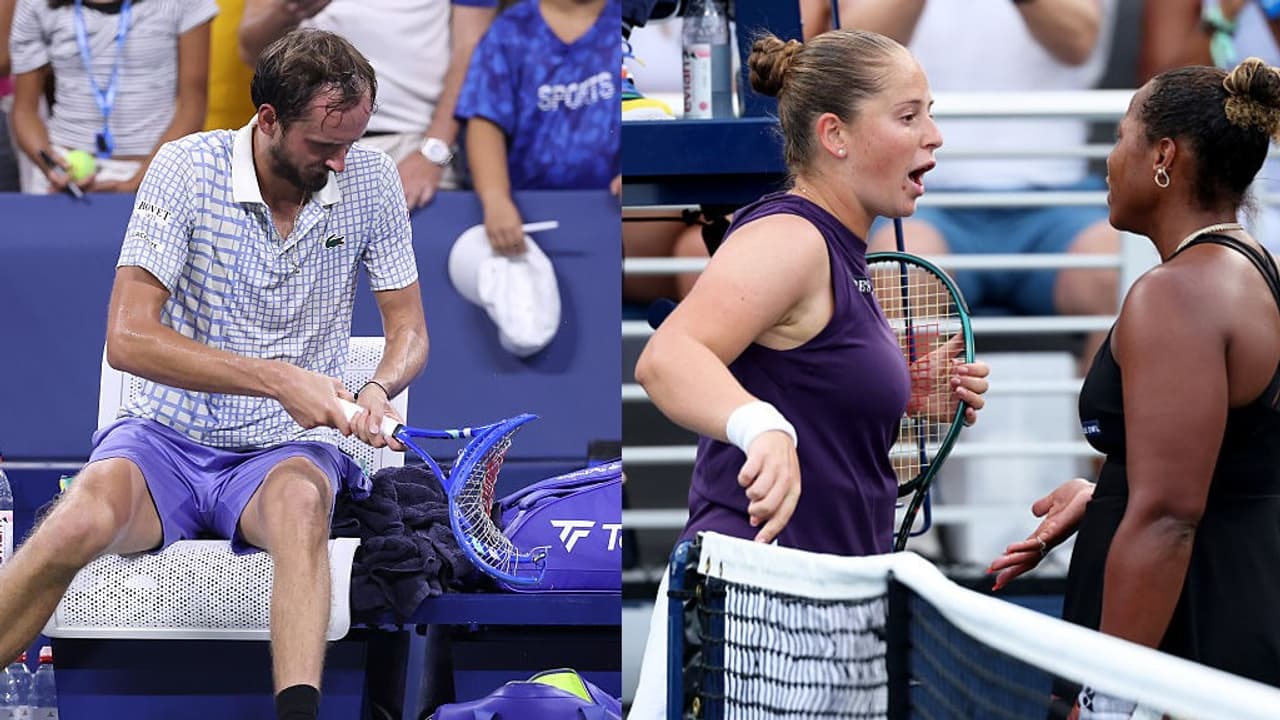The US Open blends tennis, drama, and raw emotion as players like Daniil Medvedev and Jelena Ostapenko lose their cool under pressure. From racket-smashing to tirades, New York showcases the human side of greatness on the court.
The US Open has always been more than a tennis tournament. It is theater, spectacle, and raw emotion under the brightest lights in the sport. This year, so far, Daniil Medvedev and Jelena Ostapenko reminded everyone that even the elite can crack, their tempers spilling out in spectacular fashion.
Medvedev and Ostapenko Lose Their Cool
Medvedev, long known for his combustible edge, exploded during a recent match. His racket suffered, his box absorbed a barrage of complaints, and officials handed him a $42,500 fine for unsportsmanlike conduct.
Ostapenko’s fire came after the tennis was over. Following her loss to Taylor Townsend, she unleashed a tirade at her opponent, venting her anger in full view of the Ashe crowd. It was a reminder that emotions in New York do not end with the final point.
Both outbursts revealed what tennis at this level demands.
Scroll to load tweet…
Scroll to load tweet…
The Weight of the Moment
Unlike team sports, singles tennis leaves players alone. No coach at the sideline, no teammate to lean on, no substitutions. Under the Ashe Stadium lights, every error feels larger, every squandered chance heavier.
The pressure mounts relentlessly. Service breaks sting, missed chances multiply in the mind, and the expectation of perfection becomes unbearable. Outbursts are about survival, a release before the stress crushes completely. Medvedev and Ostapenko simply showed it more vividly than others.
A History of Tempers in New York
New York has always been the natural home of tennis meltdowns. McEnroe’s “You cannot be serious!” tirades in the 1980s turned him into a folk hero. Connors thrived on arguments with umpires as much as the cheers of the crowd. Serena Williams clashed with officials in 2009 and again in 2018, proving that even icons can unravel in the moment.
In 2020, Novak Djokovic’s abrupt default for striking a line judge with a ball showed how quickly frustration can turn catastrophic. Each episode shocked, but each became part of the Open’s lore.
These eruptions fuel debate about sportsmanship. Yet they also remind us that behind the perfect groundstrokes are fragile nerves and vulnerable humans.
The Pressure Cooker of Flushing Meadows
Why here, more than anywhere else? Partly, it is the city. The crowds are loud, restless, and unrelenting. Matches stretch past midnight, the noise reverberating through Ashe. New York demands intensity, and the players absorb it.
Timing matters too. The Open closes the Grand Slam season. By September, bodies are battered, minds frayed, and ambitions sharpened to a final point. The combination is combustible. One bad call or crucial error can spark the kind of outburst that becomes headline news.
The Human Side of Greatness
Critics see only poor sportsmanship. But these eruptions reveal something deeper. Tennis demands calm precision from players living in a cauldron of pressure. To expect perfection without cracks is unfair to the players. It would be a denial of their natural vulnerabilities.
The meltdowns of Medvedev and Ostapenko are not anomalies. They are the visible cost of chasing greatness in a sport that allows no place to hide.
As the Open barrels on, the rallies will dazzle and the aces will fly. But the drama will not just come from the scoreline. In New York, where tennis doubles as theater, tempers flare, rackets fly, and composure breaks. That unpredictability, the human edge to the game, is why the US Open remains the sport’s most gripping stage.
In the end, it is not just tennis that cracks under pressure, it is the players themselves.
